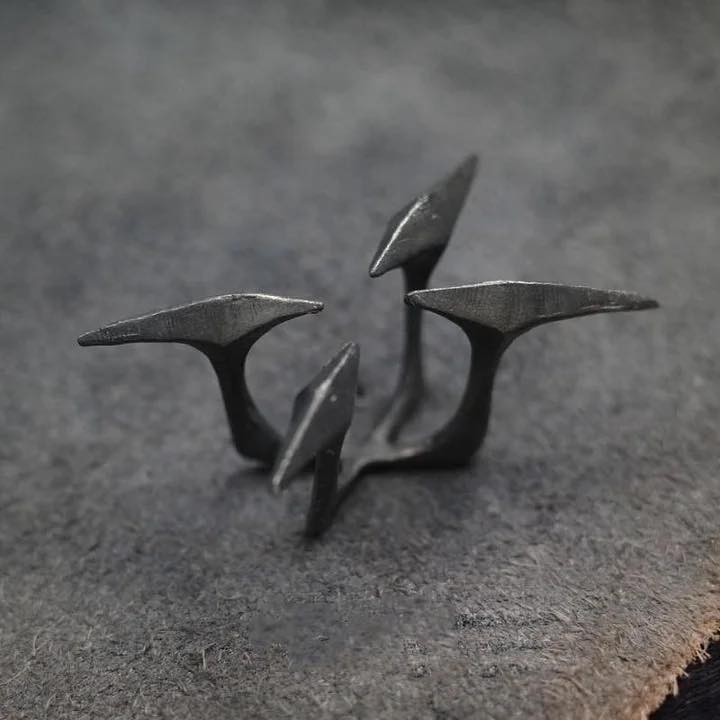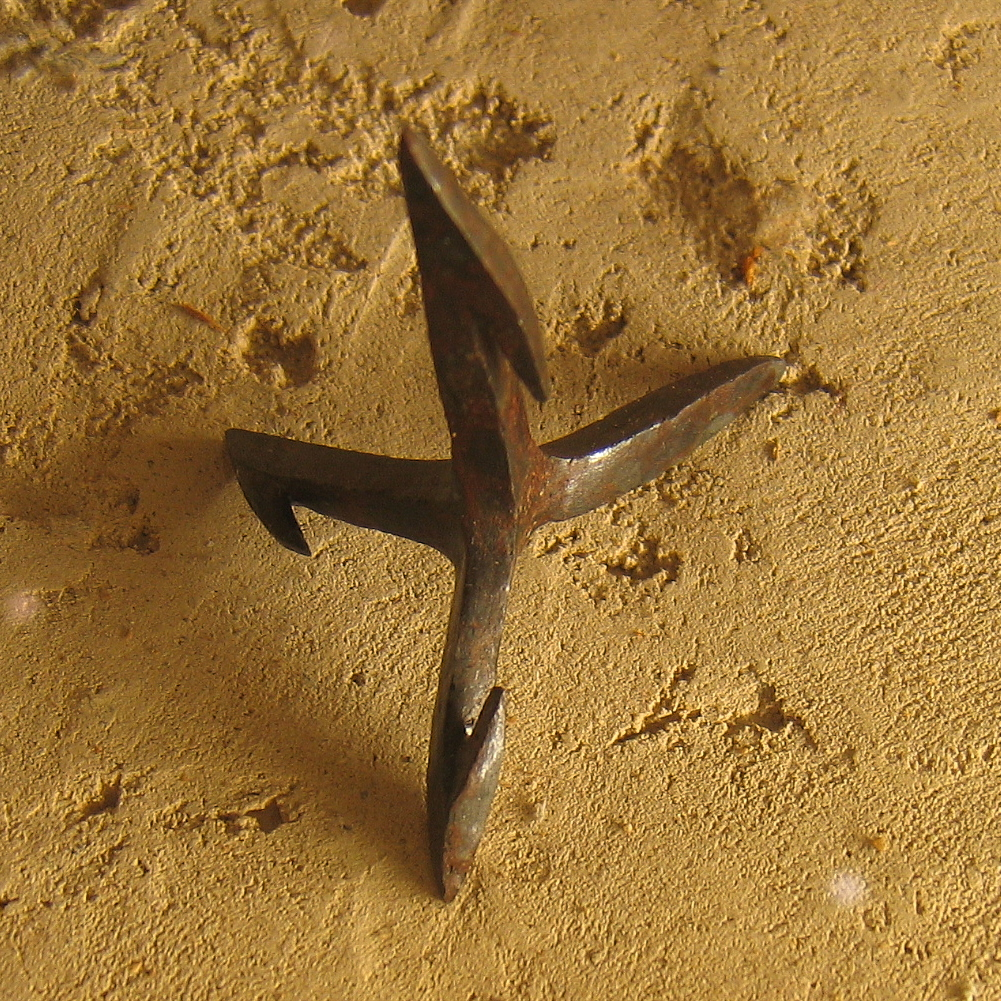When Simplicity Meant Survival
There’s something fascinating about the ingenuity of ancient tools. They weren’t built for beauty or convenience — they were designed to work, to protect, and to endure. The small, spiked object in the picture is one of those forgotten marvels of history. Simple, brutal, and timeless, it’s called a caltrop — a weapon so clever that it survived from the Roman Empire all the way into modern warfare.
If you recognize it, you’re probably a history buff or an old soul who still appreciates the craftsmanship of the past.

The Origins of the Caltrop
The caltrop (from the Latin tribulus, meaning “spiky plant”) dates back thousands of years. Ancient Roman soldiers carried them in their armor kits as part of their tactical defenses. But this small metal device wasn’t just a Roman innovation — it appeared across multiple civilizations, from medieval Europe to feudal Japan.
What made it so effective was its simple geometry. No matter how you threw it, dropped it, or scattered it, one of its sharp points always stood facing upward. That meant any advancing soldier, horse, or later, vehicle, risked impalement just by stepping forward.
Design That Never Failed
At first glance, a caltrop looks like a small piece of twisted metal — four spikes meeting at sharp angles. But its brilliance lies in physics, not force. The design ensures that, in any position, at least one spike is always facing up.
In ancient battles, these were scattered across open fields or narrow passes to slow down enemies. Horses would rear in pain after stepping on them, breaking formation and throwing cavalry lines into chaos. Even the best-trained armies couldn’t march safely through a field seeded with caltrops.
Video : THE CALTROP – pointy nastiness through the ages!
Later, during medieval times, blacksmiths forged them from iron or steel, sometimes coating them in poison or embedding them in traps. They were light enough to carry by the hundreds yet deadly enough to change the course of a battle.
From Roman Roads to World Wars
It’s incredible to think that something invented over 2,000 years ago was still being used as recently as the 20th century. During World War II, soldiers deployed modernized caltrops — often made from welded steel or bent nails — to disable enemy vehicles and puncture the tires of jeeps and trucks.
Even before that, during the American Civil War, Confederate soldiers scattered crude versions to slow down Union cavalry. Centuries before that, samurai warriors in Japan used similar spiked tools known as makibishi, often made from sharpened bamboo or iron.
Across every culture and every age, one thing remained consistent: a caltrop was the great equalizer — a small weapon with devastating potential.

A Symbol of Strategy and Resourcefulness
The caltrop wasn’t about brute strength; it was about strategy. Its very existence proves that warfare has always been as much about clever thinking as it was about weapons. While swords and spears required skill, caltrops required foresight — the ability to anticipate the enemy’s next step, quite literally.
They were used to protect retreats, fortify gates, and guard supply routes. With just a handful of these scattered in the right place, an entire army could be delayed, confused, or even forced to change direction.
Think of it as an early form of crowd control — centuries before barbed wire, land mines, or tire spikes.
From Battlefield to Modern Inspiration
Though you won’t find caltrops in today’s wars, their design continues to inspire modern security tools. Police use similar spiked devices — known as tire deflation strips — to stop speeding vehicles. The same principle applies: a simple, reliable way to halt movement without needing a massive weapon.
In many ways, the caltrop represents the foundation of mechanical deterrence — a minimalist design that achieves maximum impact. It’s proof that sometimes, the most powerful ideas come in the smallest packages.
Video : How Was The Caltrop Used In Medieval Times?
Collectors’ Item and Historical Artifact
Today, caltrops have become prized pieces for collectors, historians, and blacksmiths. Antique versions, often hand-forged, fetch impressive prices in auctions and historical exhibitions. Some enthusiasts even recreate them as decorative items or conversation pieces — a nod to humankind’s endless creativity, even in times of conflict.
Each piece tells a story — of strategy, survival, and invention. It reminds us that before technology made warfare impersonal, people fought and defended themselves with raw intelligence and whatever tools they could forge by hand.
Conclusion: The Power of Simplicity
The caltrop is more than just an ancient weapon — it’s a timeless reminder of human ingenuity. A small piece of metal with four spikes changed how battles were fought across centuries, proving that intelligence often outweighs brute force.
In an age of drones and digital warfare, it’s humbling to look back at something so basic yet so effective. The caltrop stands as a symbol of simplicity, durability, and creativity — qualities that define not just old weapons, but the spirit of invention itself.
Sometimes, the smallest tools leave the biggest marks in history.